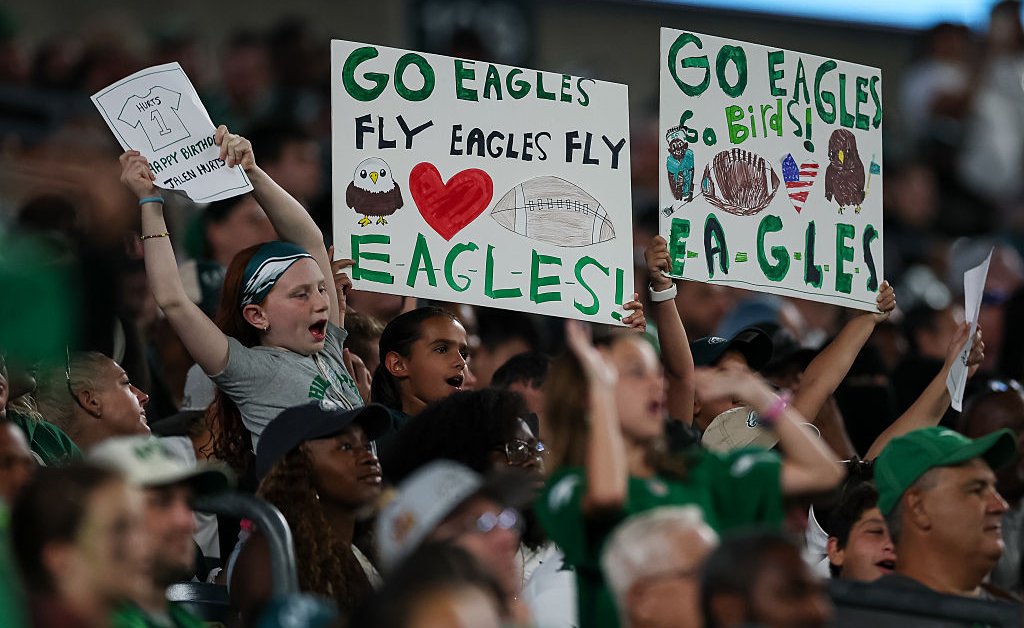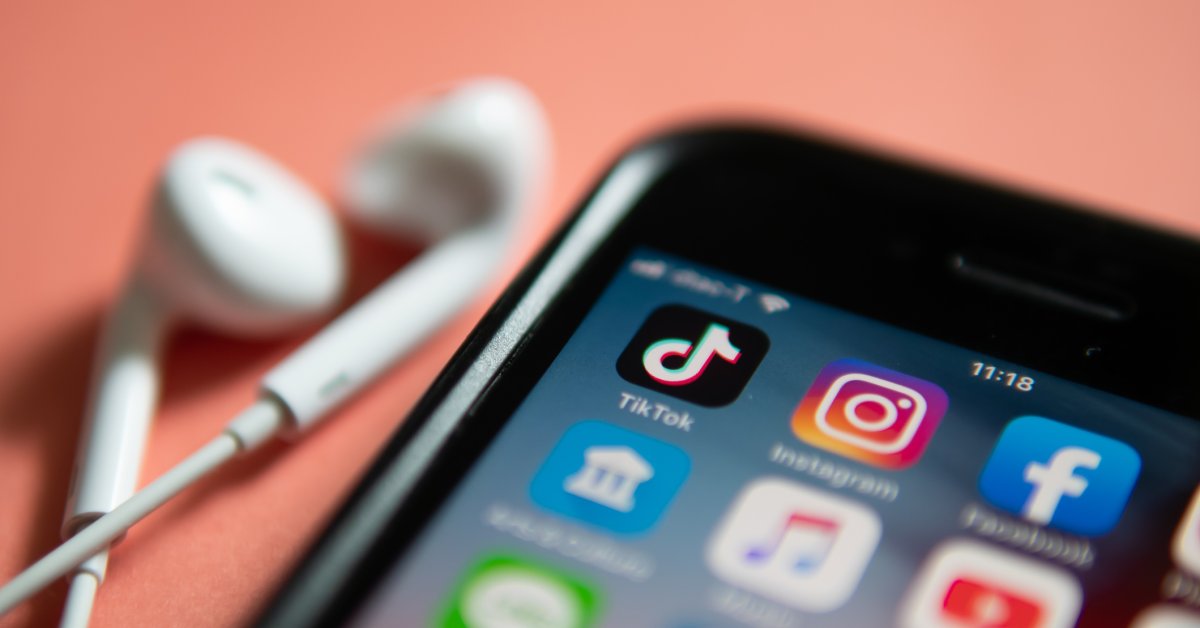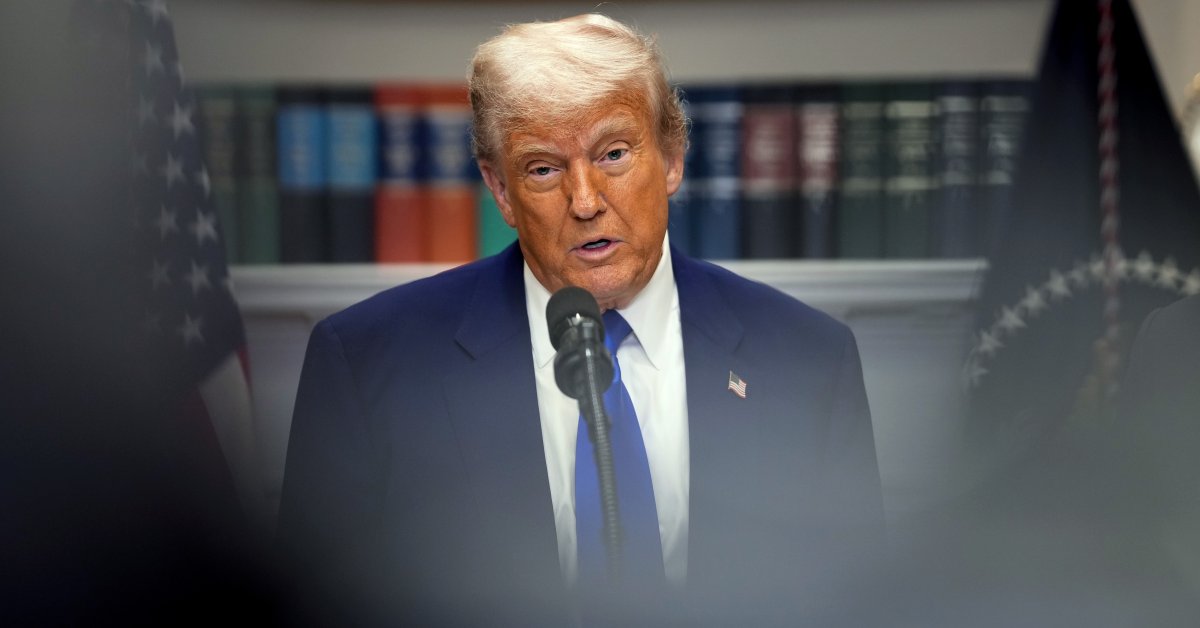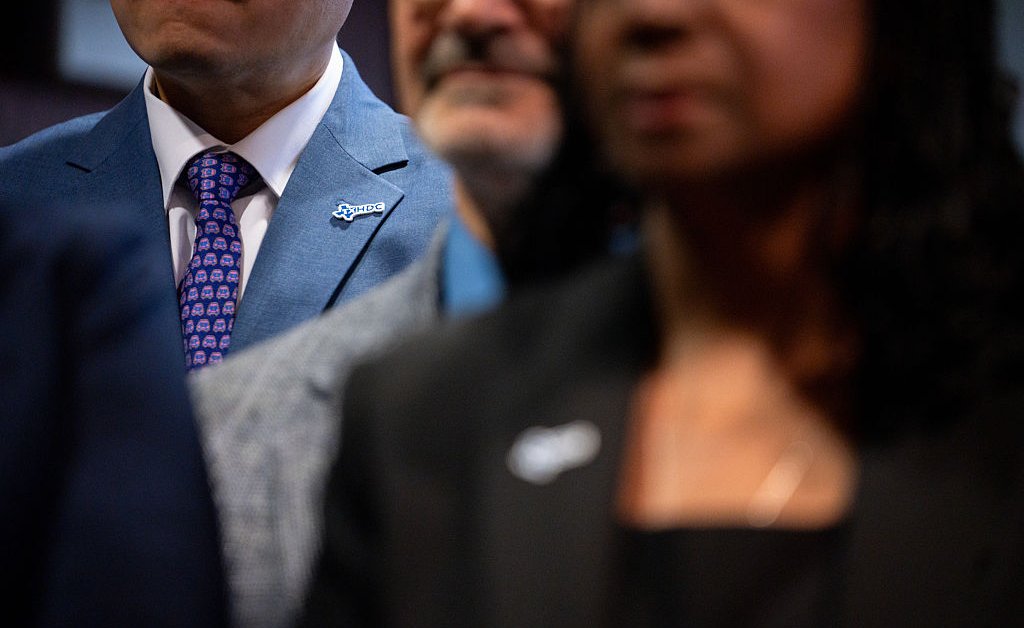Todd once spotted a person wearing a Philadelphia Eagles hat at a local shop. Instinctively, he shouted “Go Birds!”—and received the automatic “Go Birds!” back. After a few minutes of conversation, he invited his new acquaintance, George, to his family’s weekly Eagles watch parties. George and his son showed up that weekend, cheesesteaks in hand. As the season went on, more of George’s family joined. Now, they all look forward to reconnecting as the new NFL season kicks off today.
This simple story captures something important: being a football fan can be good for you and for those around you. You don’t have to know the difference between a cover-four and a Tampa-2 defense to put on a hat, make a friend at the shop, and build a new family tradition. In an era marked by epidemics of loneliness and political distrust, sports fandom is one simple and universally accessible medicine.
And it’s a popular medicine. More than 70% of Americans consider themselves football fans. Over a third think the Super Bowl should be a national holiday, and half say the Monday after should be a paid day off work. The NFL isn’t just the most-watched entertainment in America—it’s one of the country’s last truly unifying institutions. And for those who care about social connection and civic life, fandom is a surprisingly promising path to both.
Decades of research show that fans have wider friendship networks, stronger feelings of belonging, and less alienation. Ben Valenta and David Sikorjak captured this in the title of their 2022 book: Fans Have More Friends. One 2023 study even found that attending live sporting events boosts life satisfaction and reduces loneliness as much as starting a new job. And in one provocative experiment, fans were more likely to step up for one another—being three times more likely to stop to help a stranger in need who is wearing their team’s jersey.
Sports fandom has a special power to connect people, especially at a time when so many of our traditional civic bonds are fraying. As Robert Putnam documented in Bowling Alone, the churches, neighborhood associations, and bowling leagues that once anchored American communities have steadily lost members and influence, eroding civic life and our trust in one another.
Alongside generational shifts in time use and community involvement, we increasingly sort ourselves into homogeneous communities: Democrats living among Democrats, Republicans among Republicans. We shop for different brands, watch different shows, and consume different news. The combination of social media and political polarization makes it dangerously easy to never interact with people of different backgrounds and beliefs.
Few institutions in America still draw large, diverse, and deeply engaged memberships—and professional sports teams top that list. Joining in is easy: the only barrier is deciding to become a fan.
In 2024, 18 of the 20 most-watched television broadcasts were NFL games. The only non-NFL entries were one presidential debate and the Oscars. Last year’s opening weekend averaged 21 million viewers per game. Liberals and conservatives follow football at roughly equal rates. So do men and women, and fans across racial and ethnic groups.
The NFL has real problems—from head trauma to racial disparities in leadership. Until 1946, Black players were effectively banned. But the social and civic benefits of fandom are too meaningful to ignore.
It’s hard to think of any institution that is so broadly representative of the country—and so passionately embraced. So put on a team hat. Wear your jersey to the grocery store. You may be greeted by your neighbors with spontaneous “Skol!” “Gang Green!” or “Go Birds!”
When you return the cheer you will have just taken a small step toward strengthening your community—and maybe making a new friend to watch with next week.








